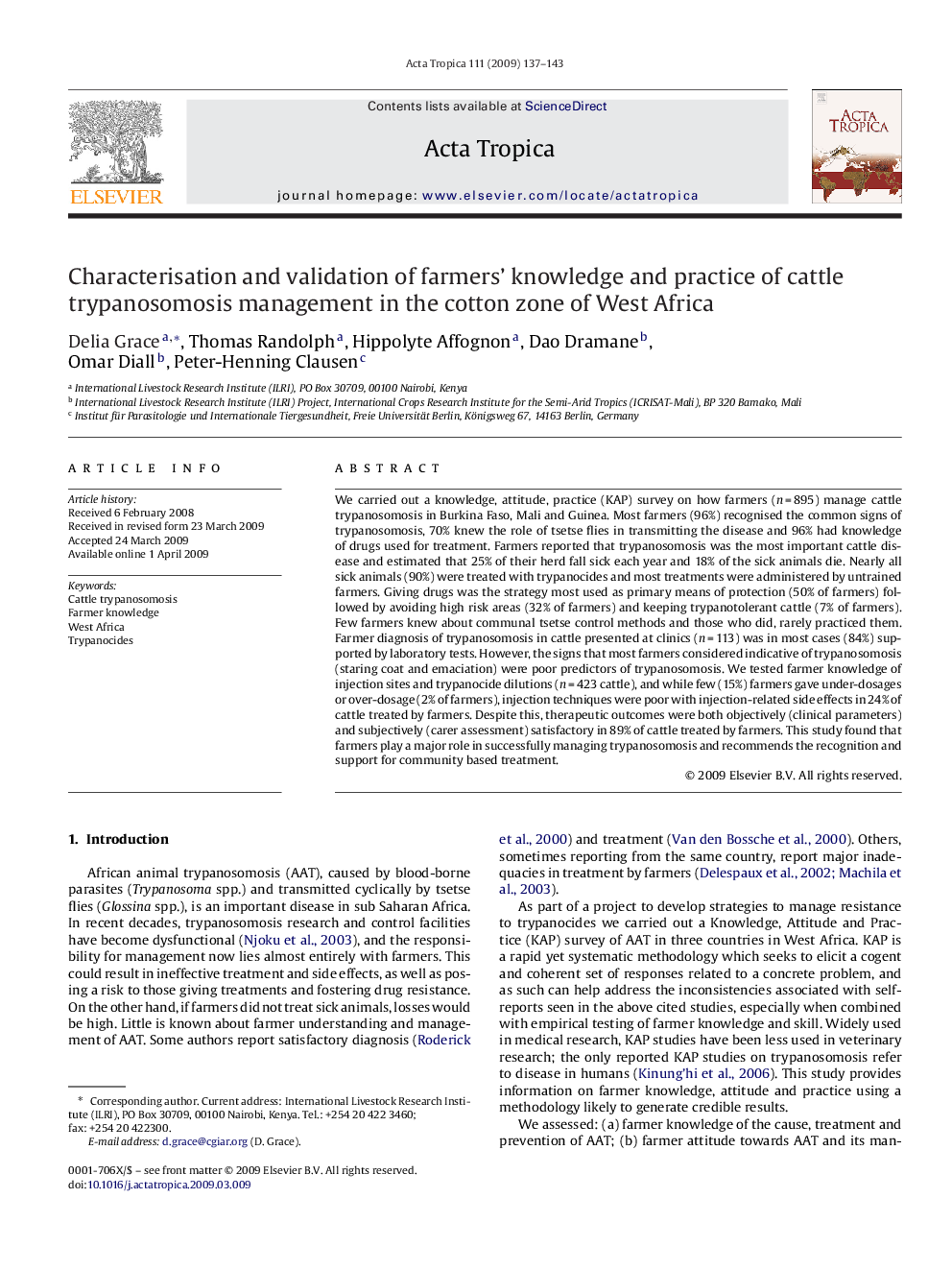| Article ID | Journal | Published Year | Pages | File Type |
|---|---|---|---|---|
| 3394015 | Acta Tropica | 2009 | 7 Pages |
We carried out a knowledge, attitude, practice (KAP) survey on how farmers (n = 895) manage cattle trypanosomosis in Burkina Faso, Mali and Guinea. Most farmers (96%) recognised the common signs of trypanosomosis, 70% knew the role of tsetse flies in transmitting the disease and 96% had knowledge of drugs used for treatment. Farmers reported that trypanosomosis was the most important cattle disease and estimated that 25% of their herd fall sick each year and 18% of the sick animals die. Nearly all sick animals (90%) were treated with trypanocides and most treatments were administered by untrained farmers. Giving drugs was the strategy most used as primary means of protection (50% of farmers) followed by avoiding high risk areas (32% of farmers) and keeping trypanotolerant cattle (7% of farmers). Few farmers knew about communal tsetse control methods and those who did, rarely practiced them. Farmer diagnosis of trypanosomosis in cattle presented at clinics (n = 113) was in most cases (84%) supported by laboratory tests. However, the signs that most farmers considered indicative of trypanosomosis (staring coat and emaciation) were poor predictors of trypanosomosis. We tested farmer knowledge of injection sites and trypanocide dilutions (n = 423 cattle), and while few (15%) farmers gave under-dosages or over-dosage (2% of farmers), injection techniques were poor with injection-related side effects in 24% of cattle treated by farmers. Despite this, therapeutic outcomes were both objectively (clinical parameters) and subjectively (carer assessment) satisfactory in 89% of cattle treated by farmers. This study found that farmers play a major role in successfully managing trypanosomosis and recommends the recognition and support for community based treatment.
